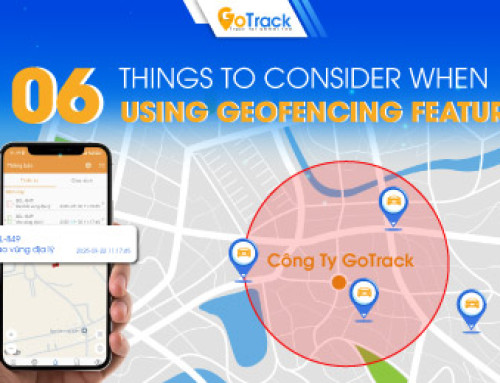In today’s fast-paced urban environment, taxi drivers face numerous challenges that can impact their efficiency, earnings, and customer satisfaction without the help of modern technology like GPS tracking devices. These smart tools have emerged as a game-changer, helping taxi drivers optimize their routes, improve service quality, and operate more efficiently.
In this article, GoTrack will show you the challenges taxi drivers face without GPS tracking and highlight five key reasons why installing GPS tracking devices is a must for every taxi service!
Challenges taxi drivers face without GPS tracking devices
Difficulty in finding the best routes
Without a GPS tracking system, taxi drivers often struggle to navigate efficiently, especially in unfamiliar areas. This leads to longer routes, wasted fuel, and frustrated passengers. Traffic congestion and road closures further complicate the situation, making it difficult for drivers to reach their destinations on time.
Increased operational costs
Fuel is one of the most significant expenses for taxi drivers. Without real-time navigation, drivers may unknowingly take longer or less fuel-efficient routes, increasing fuel consumption and overall costs. Additionally, inefficient driving patterns contribute to unnecessary vehicle wear and tear, leading to higher maintenance expenses.
![]()
Reduced work efficiency without GPS tracking devices
Time is money in the taxi business. Without GPS guidance, drivers may take longer to complete trips, reducing the number of passengers they can serve in a day. This directly impacts their earnings and overall job performance.
Disputes and customer dissatisfaction
Without route tracking, fare calculations can become a point of contention between drivers and passengers. Passengers may suspect overcharging, while drivers may struggle to prove they took the most efficient route. Such disputes can lead to negative customer reviews, affecting business reputation and future earnings.
5 reasons why taxis should have GPS tracking devices
Real-time navigation for smarter routes
One of the biggest advantages of GPS tracking devices is real-time navigation. These devices use up-to-date traffic data to suggest the quickest and most efficient routes, helping drivers avoid congestion, roadblocks, and unnecessary detours. By following optimized routes, taxi drivers can complete more trips in less time, increasing their earnings while providing faster service to passengers.
Accurate fare calculation
Many modern GPS tracking systems integrate with taxi meters to ensure precise fare calculations. With GPS-enabled tracking, the fare is determined based on real-time distance and duration, eliminating customer disputes over pricing. This transparency builds trust and improves passenger satisfaction, leading to better ratings and repeat customers.
![]()
Enhanced safety and security with GPS tracking devices
GPS tracking devices provide an extra layer of safety for both drivers and passengers. In case of an emergency, fleet managers or taxi companies can track the exact location of the vehicle and send immediate assistance if needed. Additionally, GPS systems can deter criminal activities such as taxi theft or fraudulent fare evasion. Some advanced GPS devices also come with emergency alert features that allow drivers to notify authorities or company operators instantly in case of danger.
Increased passenger satisfaction
Passengers today expect a smooth and hassle-free travel experience. GPS tracking ensures drivers take the fastest route, reducing travel time and improving customer satisfaction. When passengers experience efficient service, they are more likely to leave positive reviews, recommend the service to others, and become loyal customers. Taxi companies that implement GPS tracking often see improved ratings and higher customer retention.
Significant cost savings
With GPS tracking, taxi drivers can minimize unnecessary idling, reduce fuel consumption, and extend vehicle lifespan by following optimized routes. Additionally, some GPS systems provide real-time vehicle diagnostics, alerting drivers to maintenance needs before issues escalate into costly repairs. Over time, this leads to lower operational costs and increased profitability.



